Fabric parameters refer to the basic information of yarn and fabric involved in the fabric production process, such as yarn count, fabric weight, fabric density, Width, weight, composition, shrinkage, etc. This article mainly explains the fabric information from three points: yarn count, gram weight and fabric density. On the one hand, customers usually have relevant requirements for fabrics when bidding, on the other hand, for textile Material inspection is also known.
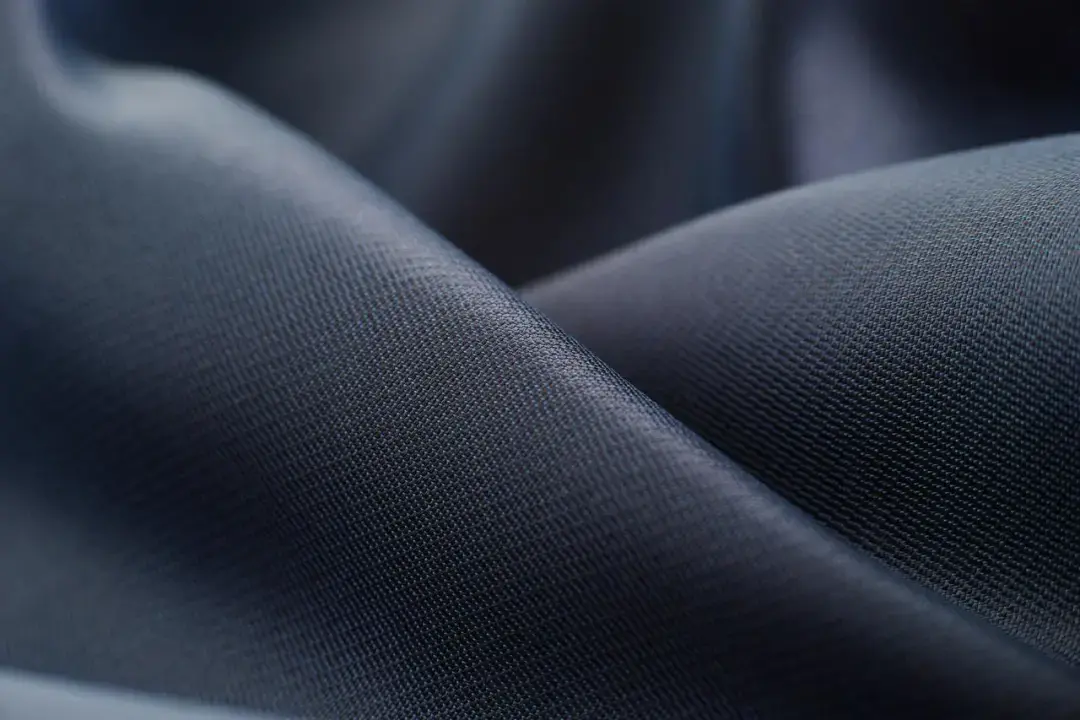
1. Yarn linear density (commonly known as yarn count)
Linear density refers to the thickness of yarn. Linear density is one of the most important physical properties of fiber. It not only affects textile processing and product quality, but is also closely related to the wearing properties of the fabric. Likewise, linear density is also the most important indicator of yarn. The linear density of yarn affects the physical and mechanical properties, feel, style, etc. of textiles. It is also one of the important basis for fabric design.
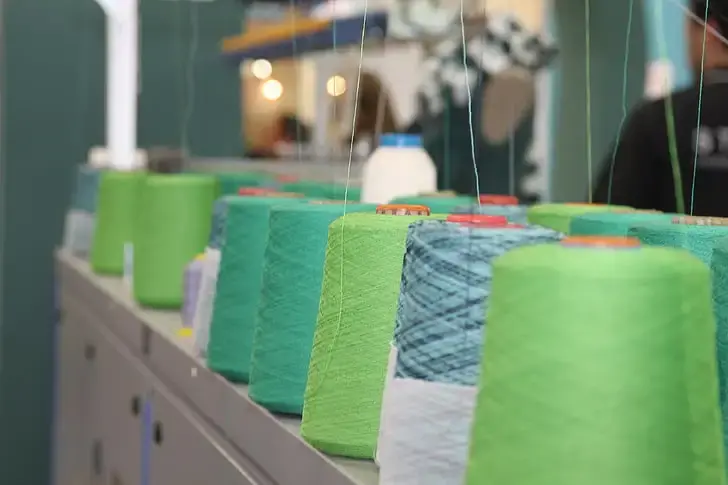
Linear density can be expressed in many forms, generally expressed as the ratio between length and mass. Currently, there are two types: fixed-weight and fixed-length systems. .
Customized length:
Tek Tex:The weight in grams of fiber or yarn 1000 meters long under the public moisture regain. The larger the tex, the thicker the yarn.
Denier: The weight in grams of a 9,000-meter-long fiber at a common moisture regain. Denier is referred to as denier (D). For example, 9000 meters of fiber weighs 1 gram as 1D. When the density of the fiber is constant, the greater the denier, the thicker the fiber.
Customized weight:
Imperial system Number (Ne):Under the public moisture regain, the length of fiber or yarn weighing 1 pound is a multiple of 840 yards. The larger the British count, the finer the yarn.
Metric count (Nm): The length in meters of fiber or yarn per gram of weight under the public moisture regain. The higher the metric count, the finer the yarn.
Inspection method:
FZ/T 50005-2013 Test method for linear density of spandex yarn
GB/T 14335-2008 Test method for linear density of chemical fiber short fibers
GB/T 14343-2008 Test method for linear density of chemical fiber filaments
GB/T 16256-2008 Test method for linear density of textile fibers Vibrator method
GB/T 16256-2008 Test method for linear density of textile fibers p>
FZ/T 50005-2013 Test method for linear density of spandex yarn
GB/T 4743-2009 Textiles Determination of normal density of package yarn skein
SN/T 3588-2013 Determination of linear density of yarn removed from knitted fabrics
GB/T 29256.5-2012 Methods for structural analysis of textile woven fabrics Part 5: Determination of linear density of yarns removed from the fabric
Take the commonly used GB/T 29256.5-2012 as an example. The method is as follows:
Operation: The sample must be humidified at least 24h, take 2 pieces in the warp direction and 5 pieces in the weft direction for testing. The length of each sample is ≥250mm and the width is >50 pieces;
Test: after pre-tensioning Next, test the length of 10 pieces and take the average, weigh and calculate at least 50 pieces in total;
Pre-tension:

Method A: Humidify and weigh in standard atmosphere, and calculate.
Method B: Drying and weighing, and then calculating the moisture regain.
For example Chestnut , the test method, conversion results and expression are as follows:
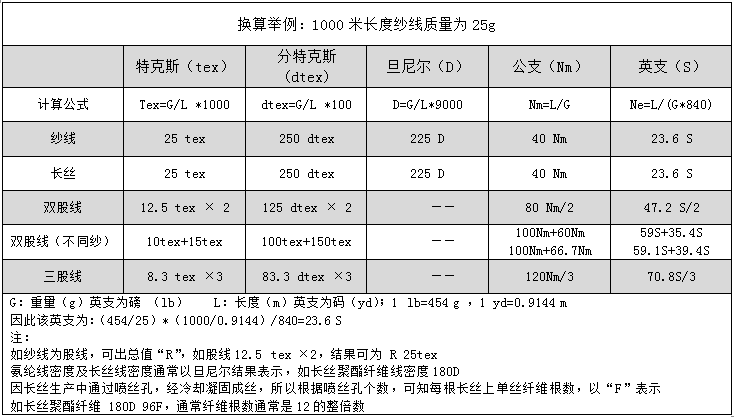
2. Weight
Gram weight, also known as mass per unit area, refers to the weight of fabric per unit area, the unit isg/㎡
Test method:
FZ/T 01033-2012 Test method for down fabric mass per unit area and down content (covering)
FZ/T 20008-2015 Determination of mass per unit area of wool fabrics
FZ/T 60046- 2016 Test method for mass per unit area of towel products
GB/T 24218.1-2009 Test method for textile nonwovens Part 1: Determination of mass per unit area
GB/T 4669-2008 Determination of mass per unit length and mass per unit area of woven textile fabrics
FZ/ T 70010-2006 Knitted fabric square meter dry weight test��Measurement
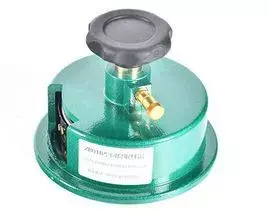
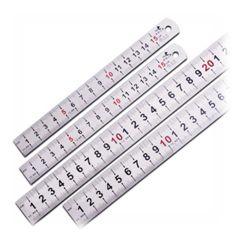
Conventional fabric sampling test area is 100cm2 (disk sampler, diameter is about 11.28cm) or 100mm×100mm; towel product sampling 300mm×300mm, at least 100mm×100mm (steel ruler).

3. Fabric density
Fabric density, It refers to the number of yarns per unit length, which can be divided into warp density and weft density. The unit is root/10cm
Inspection method:
FZ 70002-1991 Method for measuring loop density of knitted fabrics (obsolete)
FZ/T 70008-2012 Test method for knitting density coefficient of wool knitted fabrics
GB/T 4668-1995 Determination of density of woven fabrics
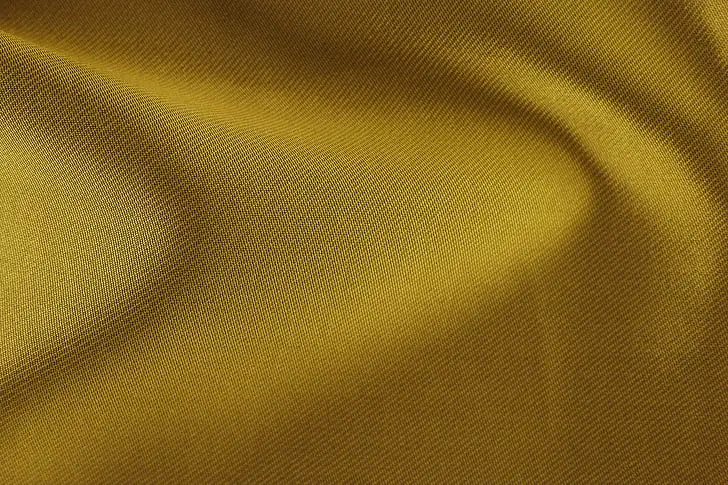
The number of knitted fabrics is 10cm each in the longitudinal and transverse directions The total number of coils and the product of the coils (obsolete)
The wool knitted fabric is within 1000 coils (100 horizontally and 10 vertically or 50 horizontally and 20 vertically), in the pre-added Select 10 transverse yarns (narrowly 20) under tension, measure the total length and total mass, then calculate the loop length and yarn linear density, and finally calculate the braiding density coefficient.
The woven fabric test is based on the yarn splitting or fabric density mirror test results, such as 250 threads for 10cm in the warp direction and 150 threads for 10cm in the weft direction. The result is
1. 250.0 roots/10cm in the warp direction, 150.0 roots/10cm in the weft direction or
2. 63.5 roots in the warp direction /in, 38.1 roots/in in weft direction, 1in (inch) = 2.54cm
Conclusion
In actual production, companies often abbreviate some basic parameters of fabrics. We need to understand and identify the information, such as 40s/2*40s/2+ (40s/2+40d) , is a double-stranded thread of 40S in the warp direction, a double-stranded thread of 40S in the weft direction, and woven into a 40D spandex plied yarn; 10*9/96*65, 10*9 means that the warp yarn is a 10-inch yarn, and the weft yarn is 9-inch yarn, 96*65 means the warp density is 96 threads/inch, and the weft thread density is 65 threads/inch; 68D/24F
170T means that the yarn count of the fabric is 68D chemical fiber filament. Each filament bundle contains 24 monofilaments, and the sum of warp density and weft density (roots/inch) is 170.







